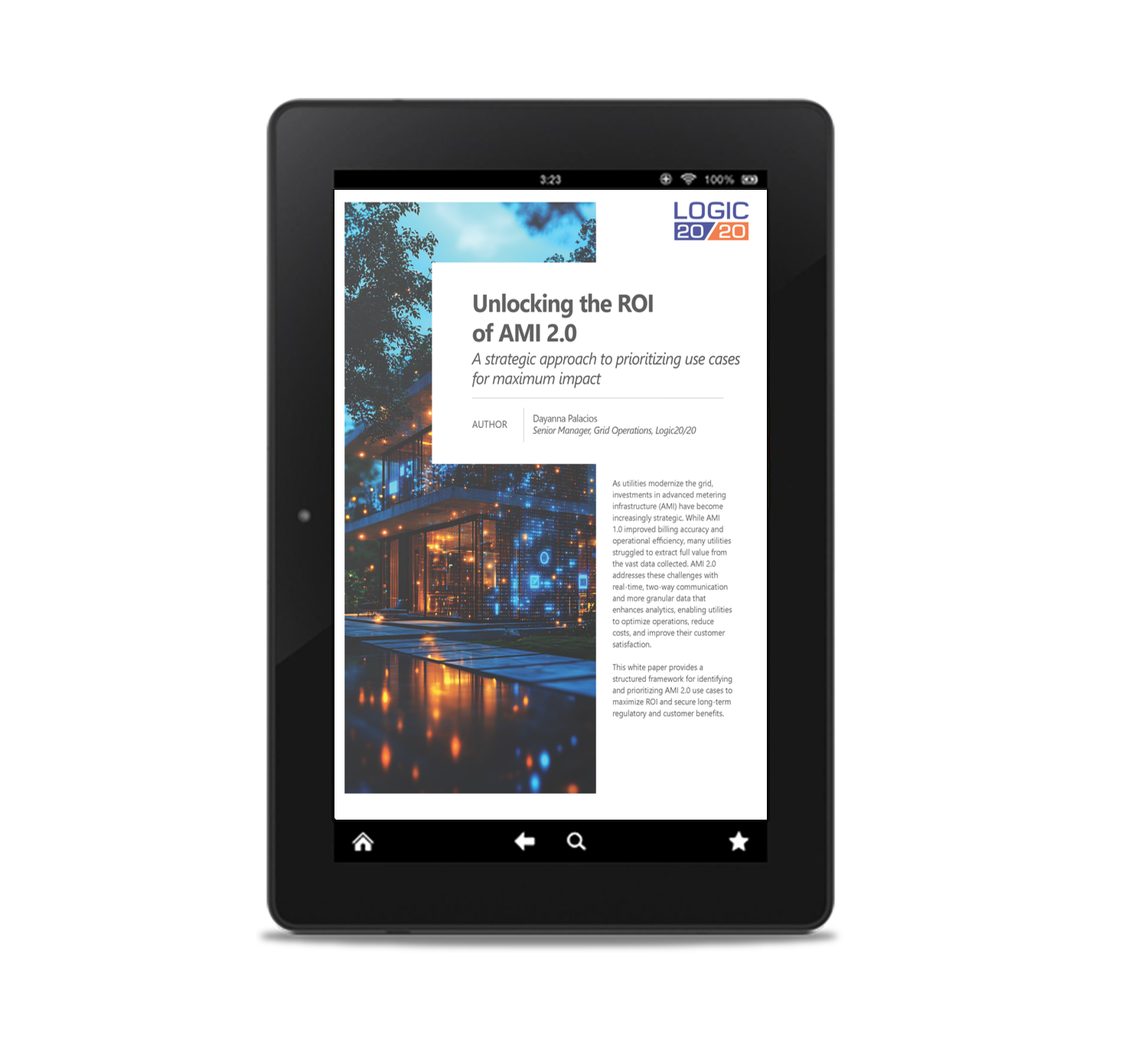3-minute read
Quick summary: AMI 2.0 and DERMS form a powerful, integrated foundation for real-time grid visibility, control, and resilience in an increasingly distributed energy landscape.
As distributed energy resources (DERs) continue to reshape the grid, utilities are turning to two complementary technologies to manage the resulting complexity: the latest evolution of advanced metering infrastructure (AMI 2.0) and distributed energy resource management systems (DERMS). On its own, each solution delivers important capabilities. When integrated, they offer a powerful foundation for data-driven, real-time grid operations that are more adaptive, efficient, and resilient.
In this article, we explore three critical areas of utility operations where AMI 2.0 and DERMS work together to improve visibility, automate response, and strengthen overall grid performance.
Article continues below.

White paper: Unlocking the ROI of AMI 2.0
A strategic approach to prioritizing use cases for maximum impact
We will never sell your data. View our privacy policy here.
1. Voltage monitoring and optimization
Voltage management has traditionally relied on a limited number of sensors and engineering estimates to infer conditions across the distribution system. AMI 2.0 enables a more granular approach by delivering detailed voltage measurements at the customer level. Utilities gain real-time visibility into what’s happening at the grid edge, enabling them to detect over-voltage and under-voltage conditions that might otherwise go unnoticed.
The visibility enabled by AMI 2.0 becomes actionable when paired with DERMS. Using data from AMI meters, DERMS identifies where voltage support is needed and dispatches DERs—such as smart inverters or batteries—to provide reactive power, absorb excess energy, or reduce output. This dynamic control supports programs like conservation voltage reduction (CVR) while helping prevent voltage violations that could affect reliability or damage equipment.
With AMI and DERMS working in tandem, utilities can manage voltage more precisely, more proactively, and with far less manual intervention.
2. Load forecasting and peak load management
AMI 2.0 provides a detailed picture of consumption patterns, capturing usage at fine time intervals across the network. This data enables utilities to forecast load at the feeder, transformer, and even customer level, which is essential for anticipating peak demand, planning for capacity upgrades, and identifying localized stress before it becomes a problem.
But forecasting alone isn’t enough. DERMS takes the next step by using that data to coordinate distributed resources in real time. If a forecast shows a peak event on the horizon, DERMS responds by adjusting DER schedules—for example, by charging batteries during off-peak hours, curtailing solar when demand is low, or throttling EV charging to reduce congestion.
The result is a more balanced load profile and fewer surprises for operators. Rather than relying on alerts or after-the-fact responses, utilities can manage demand continuously and predictively, smoothing out peaks, relieving grid congestion, and avoiding costly emergency measures.
If a forecast shows a peak event on the horizon, DERMS responds by adjusting DER schedules.
3. Power quality monitoring and response
Power quality (PQ) issues such as voltage sags, harmonic distortion, and momentary interruptions degrade grid performance and affect sensitive customer equipment. Historically, utilities have had limited visibility into these events and often relied on customer complaints to detect them.
AMI 2.0 changes the equation. Today’s meters are capable of flagging PQ anomalies in near real time. These flags enable utilities to identify and isolate problems faster, whether they originate upstream or at the customer level.
DERMS adds an active response layer to power quality management. When PQ issues are detected, DERMS can adjust inverter settings, dispatch reactive power, or isolate contributing DERs, thus stabilizing the system before problems escalate. In some configurations, DERMS can even use the AMI network itself as a communications channel to issue control signals, creating a seamless feedback-and-response loop.
Together, AMI 2.0 and DERMS give operators both the insight and the reach to maintain power quality standards in an increasingly complex distribution environment.
Turning visibility into action
The path to a more responsive grid depends on the ability to see what’s happening in real time—and to act on that insight without delay. AMI 2.0 and DERMS offer exactly that. Where AMI provides precision data from the grid edge, DERMS translates it into targeted control. The combination enables a shift from reactive operations to continuous optimization, positioning utilities to manage rising DER adoption, tighter reliability margins, and evolving customer expectations with greater confidence.

Powering a sustainable tomorrow
We partner with utilities to help them build a more resilient grid and move towards a cleaner, brighter future through
- Smart automation
- Asset image analytics
- DERMS implementation
- Analytics & predictive insights
- Cloud optimization


